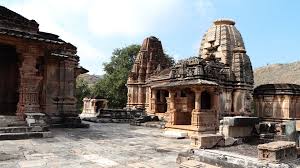Temples are often recognized by their tall, impressive towers, known as spires or shikharas. These towering structures aren’t just for decoration; they have important roles in temple design and function. Let’s explore some fun facts about why temples have tall towers!
The Purpose of Tall Towers
The tall towers of temples serve several purposes. One main reason is to symbolize reaching towards the heavens. In many cultures, temples are places where people connect with the divine or the spiritual. A tall tower helps to visually represent this connection between the earth and the sky. It is a way of showing that the temple is a sacred place, bridging the gap between the human world and the divine.
Historical and Cultural Significance
The design of temple towers can be traced back to ancient times. Different cultures and religions have used tall towers to reflect their beliefs and values. In Hindu temples, for example, the tower often represents Mount Meru, which is considered the center of the universe in Hindu cosmology. This symbolic mountain connects the heavens with the earth and is an important aspect of the temple’s design.
Architectural Features
The construction of these tall towers requires special skills and knowledge. A temple construction contractor plays a crucial role in ensuring that the tower is built correctly and safely. These experts use various materials and techniques to create these structures, making sure they are both beautiful and durable. The design often includes intricate carvings and decorations that add to the tower’s grandeur.
The Role of the Temple Contractor
A temple contractor is responsible for overseeing the construction of these impressive towers. They coordinate with architects, craftsmen, and other specialists to bring the design to life. This involves managing the construction process, ensuring that all details are carefully executed, and solving any problems that may arise during the building process. The contractor’s work ensures that the temple tower is not only aesthetically pleasing but also structurally sound.
Fun Facts About Temple Towers
- Different Shapes: Temple towers come in various shapes depending on the cultural and religious context. For example, in South India, temple towers are often pyramidal, while in Northern India, they might be more cylindrical.
- Decorative Elements: Many temple towers are adorned with sculptures and carvings of deities, mythological stories, and symbols. These decorations tell stories and hold spiritual significance.
- Landmark Visibility: Tall towers can be seen from a distance, making the temple a recognizable landmark. This visibility helps people find the temple and signifies its importance in the community.
- Sacred Geometry: The design of temple towers often follows sacred geometric principles. This means that the dimensions and proportions are carefully planned to align with spiritual beliefs and enhance the temple’s sacred atmosphere.
Conclusion
Temple towers are much more than just tall buildings; they are rich with history, culture, and symbolism. The role of a temple construction contractor and a temple contractor is essential in bringing these magnificent structures to life, combining artistic beauty with practical construction skills. So, the next time you see a tall temple tower, you’ll know there’s a lot more to it than meets the eye!

